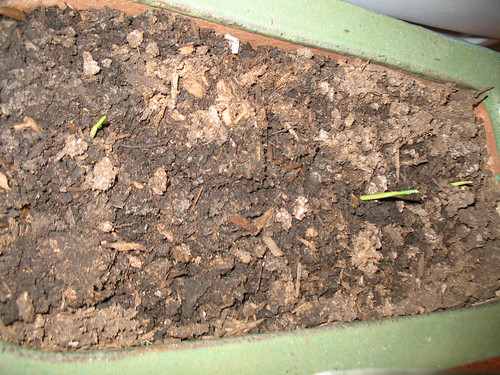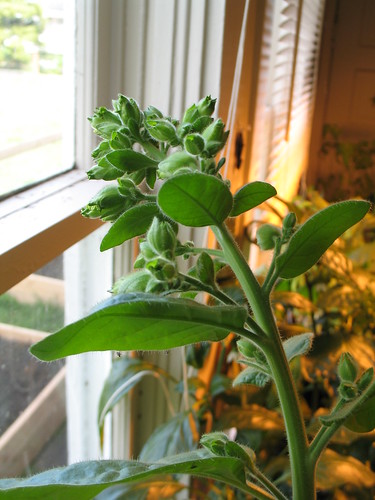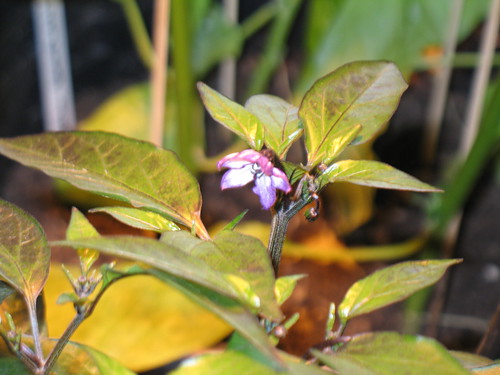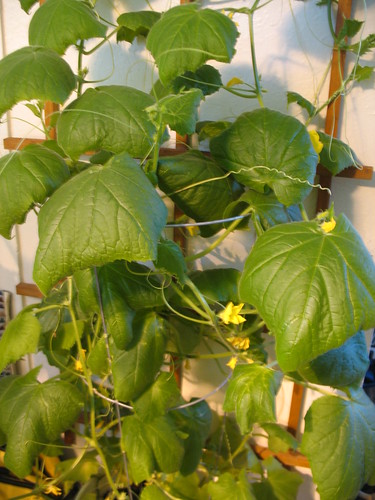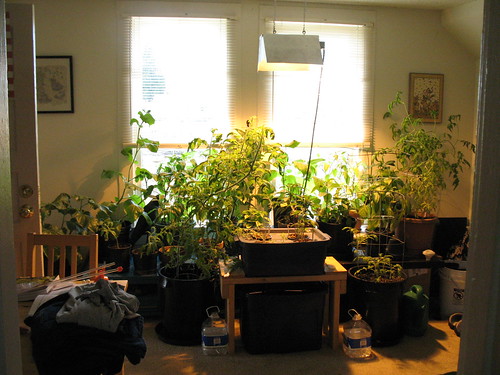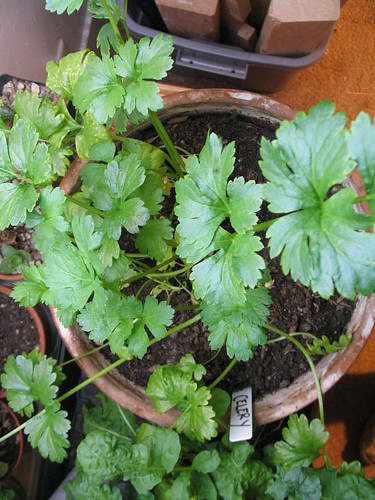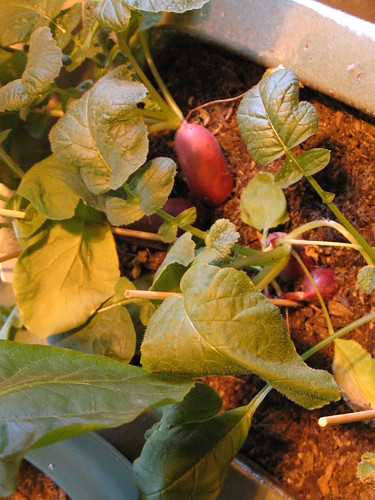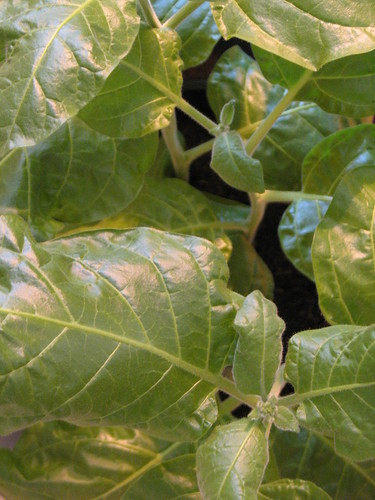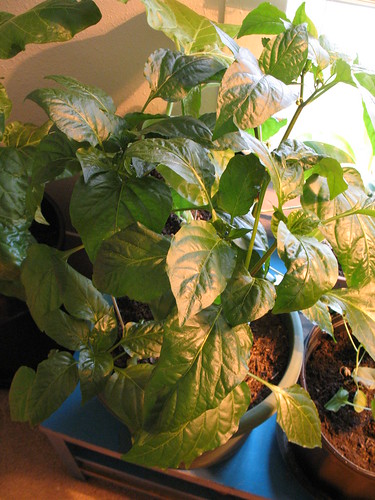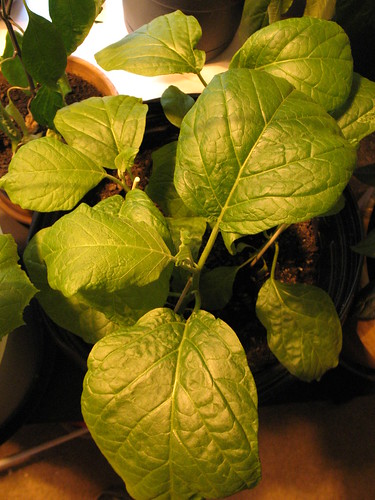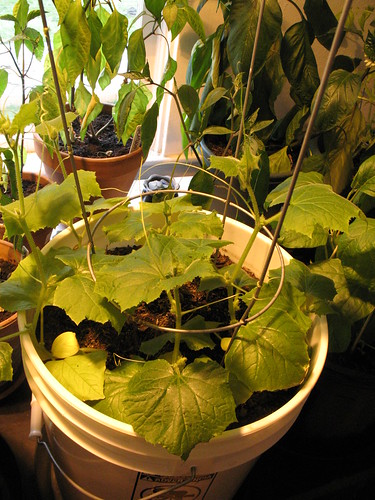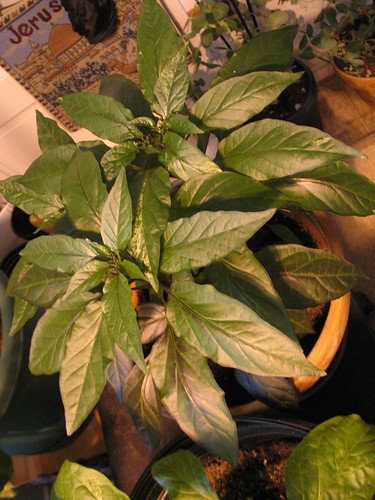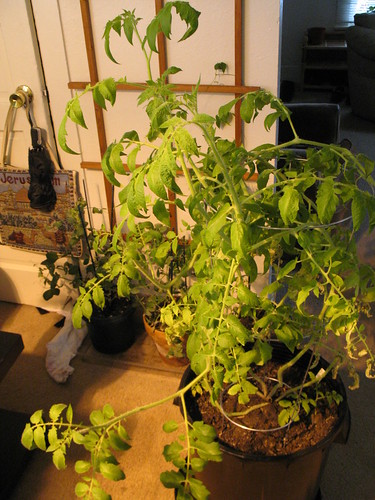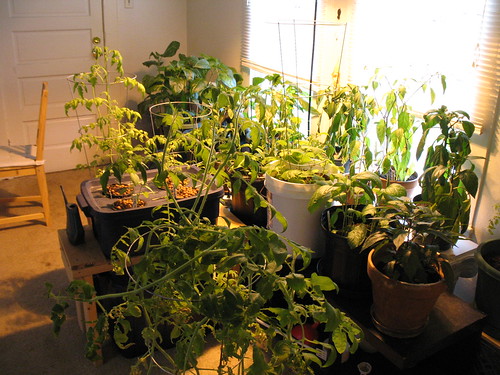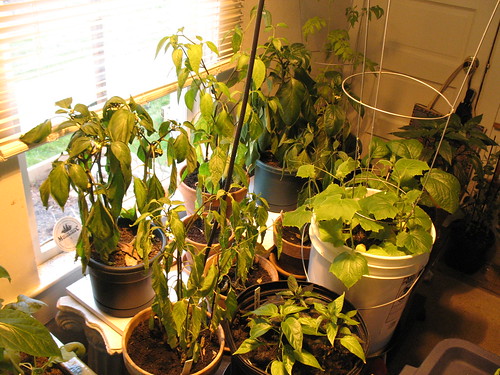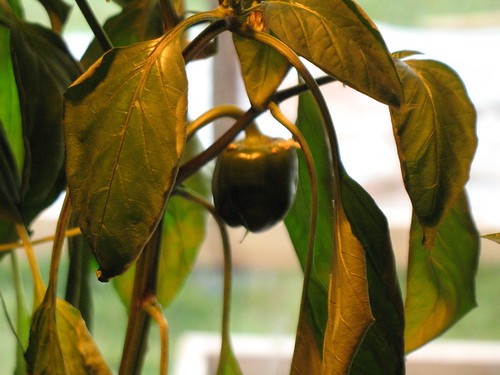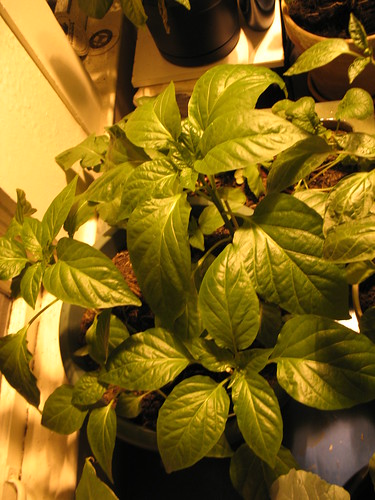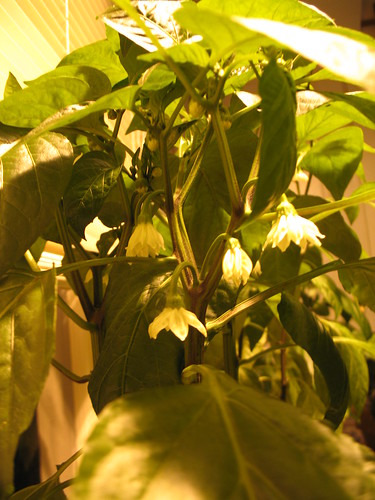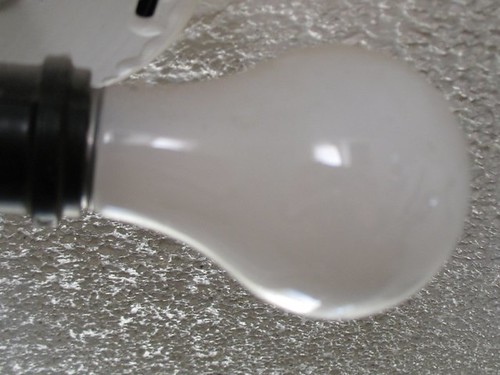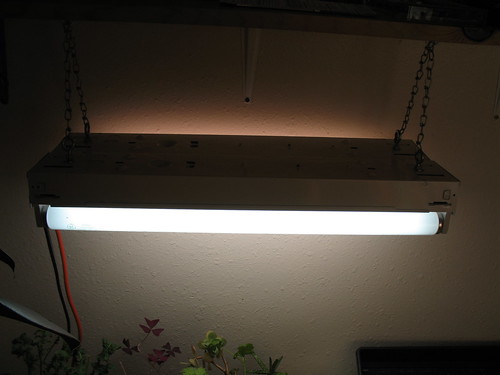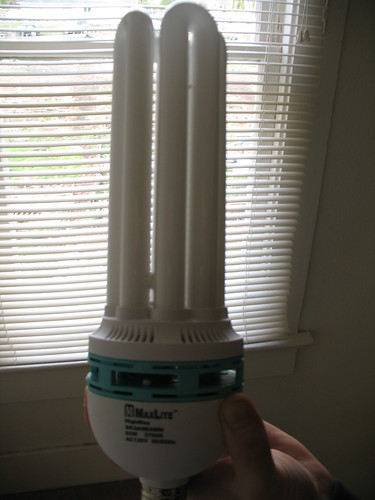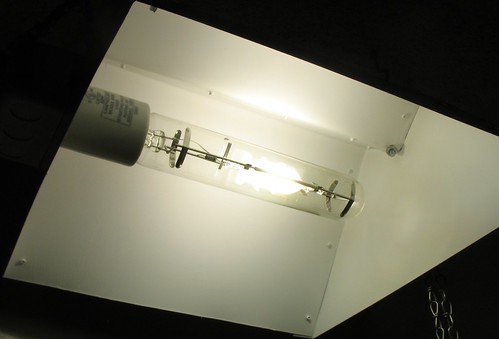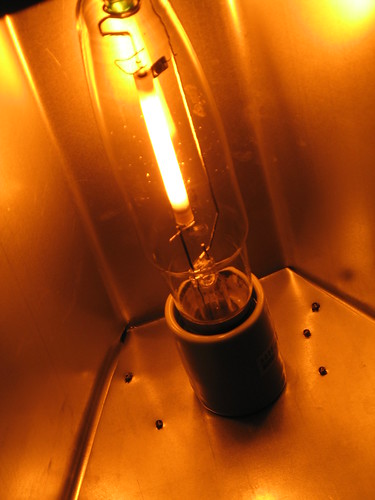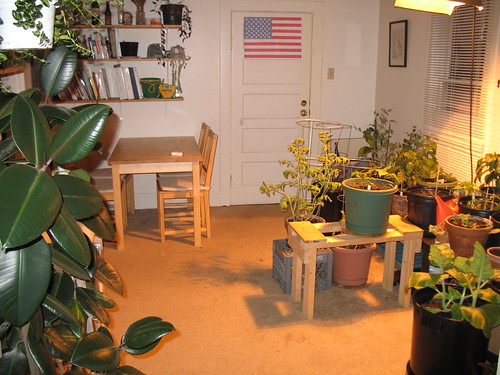Since then I've also moved. I'm no longer in a house, but instead an apartment in the northwest corner of Seattle. I was reluctant at first to start up the garden again for a few reason.
The first being that I sold the light. Mostly because if I was going to start again I'd need a better one. I haven't dished out the cash for a new one yet, but the days are getting longer and I figured I'd give it a shot just using natural light to see how that goes.
My new place is fairly well lit, unfortunately with indirect sunlight. There is a large east facing window in the living room and a smaller south facing window in the dining room. Being as the dining room is linoleum I opted for placing it there for now. As the temperatures get a little warmer the majority of the plants are going to go outside where they can get a lot more natural light (the walk is open facing south).
Here's a quick rundown of what I've got going so far and how it's fairing. I'm still using the seeds that I bought about a year ago, since I have tons of them and the cost to replace with brand new seeds far out weights the benefits. I know that it's best to use fresh seeds, but sometimes that isn't possible. Ob la di.
Martian Giant Tomatoes: Sprouted 2/26, still in small incubator
Roma Tomatoes: Sprouted 2/27, still in small incubator
Cilantro: Sprouted 3/2, still in small incubator
Oregano: No growth
Yellow Summer Squash: Sprouted 2/24, still in small incubator but needs to be transplanted ASAP as they are getting too big and lanky (I need more pots)
Mediterranean Cucumber: Sprouted 2/24, 2/29 moved to small compostable pots
Pavira Chili: No growth
Cayenne Pepper: No growth
Red Beets: 2/27 sprout, still in small incubator
Brussel Sprouts: 2/26 sprout, desperately needs to be put into a pot, long and very stringy at this point (again need pots)
Oregon Spring Bush Tomatoes: 3/2 sprout, still in small incubator
Orange Eggplant: 3/1 sprout (only 1 of 3), still in small incubator
Hopi Tobacco: no growth
Scherazi Tobacco: no growth
Stringless Snap Bush Bean: 2/24 sprout, 3/2 moved to 5 gal pot with other beans
Cascadia Snap Bush Bean: 2/24 sprout, 3/2 moved to 5 gal pot with other beans
Yellow Pear Cherry Tomatoes: 3/1 sprout, still in small incubator
Orange Bell Pepper: no growth
California Sweet Bell Pepper: no growth
Yankee Bell Pepper: no growth
True Gold Sweet Corn: 2/25 sprout, 2/29 moved to small compostable pots
Triple Play Sweet Corn: 2/25 sprout, 3/6 moved to pot
Thai Basil: 2/27 sprout, still in small incubator
Red Basil: 2/28 sprout, still in small incubator, seems to be struggling a bit.
Here are a few pics of the scene so far:




Another thing that I've acquired since I moved is a carnivorous plant garden! It's actually really cool. I need to get some more plants in there but here's a peak at what it looks like:


Well that's the scene as of now. I'll keep y'all updated as we move forward.

